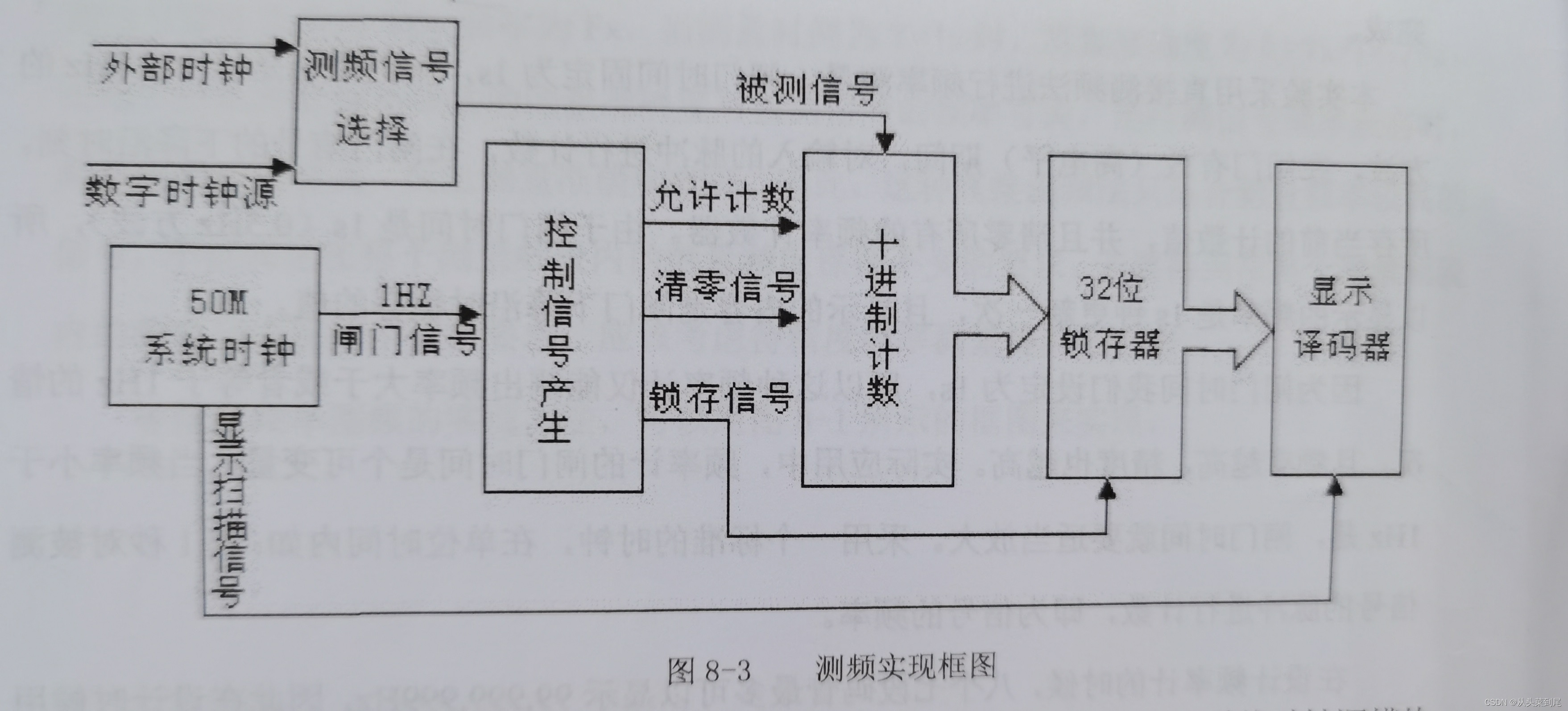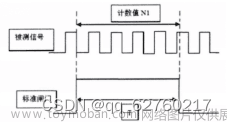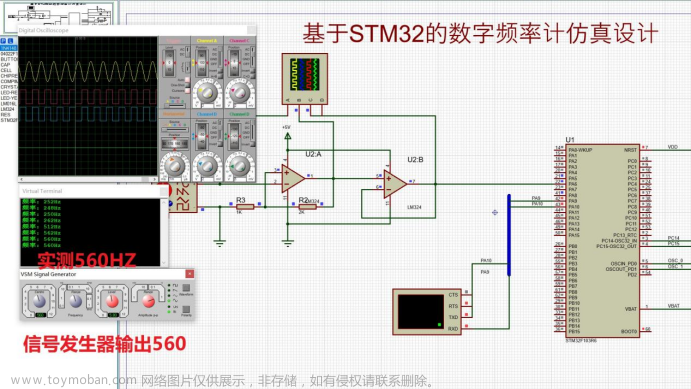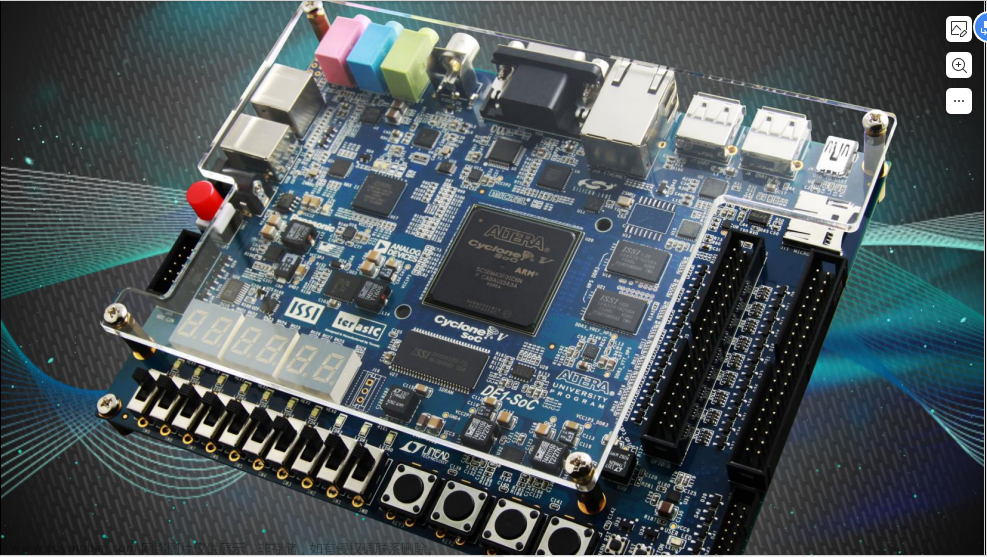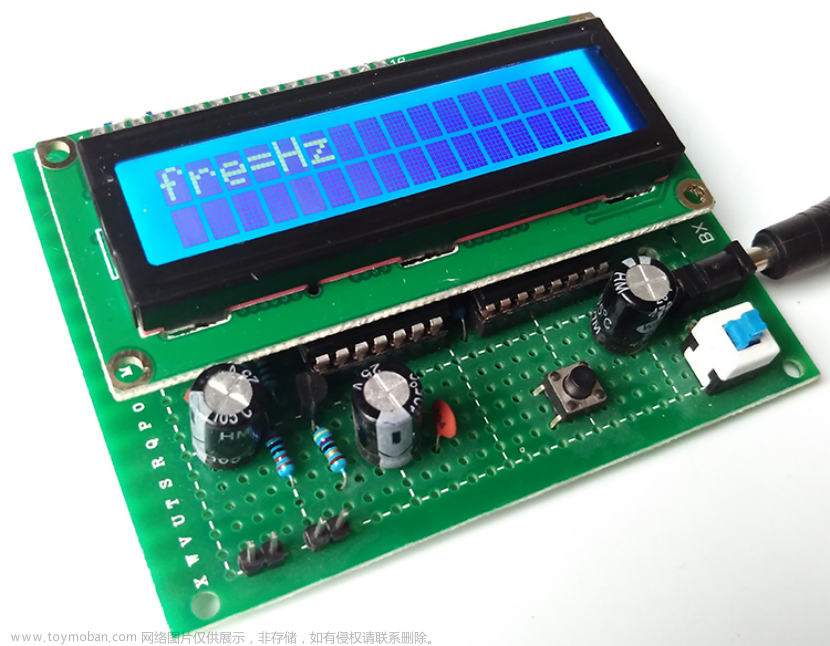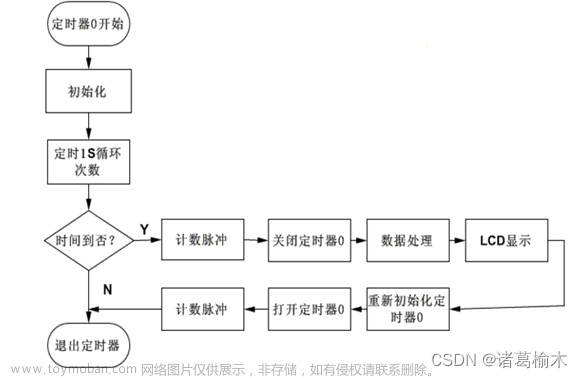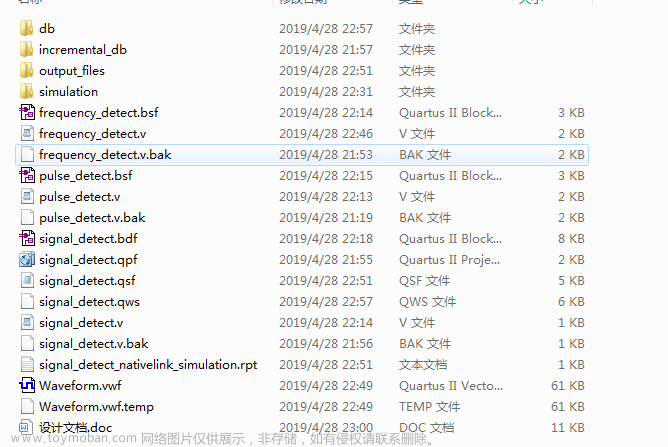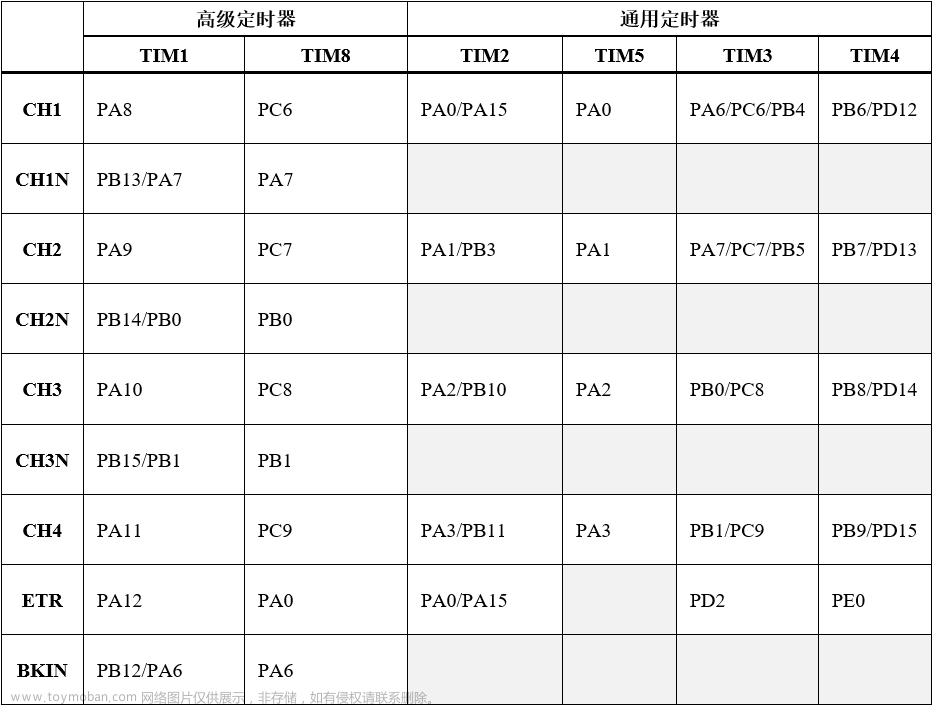module flag(clk,rst_n,cnt);
input clk;
input rst_n;
output [2:0]cnt ;
reg[31:0]count ;
reg [2:0]cnt;
always@(posedge clk or negedge rst_n)
begin
if(~rst_n)begin
count<=0 ;
cnt<=3'd0 ;end
else if (count>= 32'd24 999) begin
cnt<=cnt+1'b1 ;count<=32'd0 ;
end
else if (cnt>=3'd6) begin
cnt<=0;end
else
count<=count+1'b1 ;
end
endmodule
'timescale 1 ns/ 1ps
/
module seg (
clk, rst_ n,data,dig,led
);
input clk;
input rst_n;
input [23:0] data;
output [5:0] dig; //六位控制六个数码管
output [7:0] led;
reg [5:0] dig;
reg [7:0] led;
reg [3:0] d;
always@ (posedge clk or negedge rst_ n ) begin
if(~rst n) led<= 8'b0;/ /low active
else begin
case (d)
4'h0:led<= 8 'b00111111 ;//0
4'h1 :led<= 8 'b00000110;//1
4'h2:led<= 8'b01011011 ;//2
4'h3:led<= 8'b01001111 ;//3
4'h4:led<=8'b01100110;//4
4'h5:led<= 8'b01101101 ;//5
4'h6:led<= 8'b01111101 ;//6
4'h7:led <= 8 'b00000111;//7
4'h8:led<= 8'b01111111 ;//8
4'h9:led<= 8'b01101111 ;//9
4'ha:led<= 8 'b01110111 ;//a
4'hb:led<= 8'b01111100;//b
4'hc:led<= 8'b00111001 ;//c
4'hd:led<= 8'b01011110;//d
4'he:led<= 8'b01111001 ;//e
4'hf:led<= 8'b01110001 ;//f
default: led<=8'b0 ;
endcase
end
end
wire [2:0]cnt2 ;
flag flag_ _m0 (
.clk(clk),// INPUT
. rst_n(rst_n) ,// INPUT
, cnt (cnt2) / / OUTPU
);
always@ (posedge clk or negedge rst_ n ) begin
if(~rst_n)begin dig<= 6"b0;
end
else begin
case (cnt2)
3'd0 :begin dig<= 6'b000001; d<=data[3:0] ;end
3'd1 :begin dig<= 6'b000010; d<=data[7:4] ;end .
3'd2 :begin dig<= 6'b000100; d <=data[11:8] ;end
3'd3 :begin dig<= 6'b001000; d<=data[15:12] ;end
3'd4 :begin dig<= 6'b010000; d<=data[19:16] ;end
3'd5 :begin dig<= 6'b100000; d<=daLa[23:20] ;end
default :begin dig <= 6'b0 ;end
endcase
end
end
///
module count (
clk,
rst_n,
bin,
clk_in
);
input clk;
input rst_n;
input clk_in;
output [23:0] bin;
reg [1:0]clk_1hz ;
reg[31:0] countl ;
reg[23:0] count2 ;
reg[23:0] bin;
always @ (posedge clk or negedge rst_ n )
begin
if (~rst_n) begin
count1<=0;clk_1hz<=0;
end
else begin
if (count1 == 32'd49 999 999) begin
count1<= =0 ;
clk 1hz<=clk 1hz+1;end
else if(clk 1hz== 0)
clk 1hz <= 2'd1 ;
else countl <= count1+1'b1 ;
end
end
wire clk_in pos;
reg clk_in0,clk_inl ;
always @ (posedge clk or negedge rst_n)
begin
if(~rst n) begin .
clk_in0<=0 ;
clk_in1 <=0 ;end
else begin
clk_in0 <=clk_in;
clk_in1 <=clk_in0 ;end
end
assign clk_in pos=~clk_in1 & clk_in0;
always@(posedge clk or negedge rst_n)
begin
if (~rst n) begin
count2 <=0;bin<=0 ;end
else if (clk_1hz==1 &&clk_in_pos)
count2 <= count2 + 1'b1 ;
else if(clk_1hz==2)
bin<=count2;
else if(clk_1hz==3)
count2<=0 ;
else begin count2 <= count2 ;bin<=bin ;end
end
//
module hex tobcd (
input clk_in ,
input rst,
input [23:0]bin ,
output [23:0]bcd ,
output [1 :0] bcd_ valid .
);
reg [1:0] bcd valid;
//提取显示数值所对应的十进制数的各个位
assign bcd[3:0] =bin%4'd10;
assign bcd[7:4] =bin/4'd10%4'd10 ; //十位数
assign bcd[11:8] =bin/7'd100%4'd10 ; //百位数
assign bcd[15:12] =bin/10'd1000%4'd10 ; //千位数
assign bcd[19:16] =bin/14'd10000%4'd10; //万位数
assign bcd[23:20] =bin/17'd100000;
//十万位数
always@(posedge c1k_in)
begin
if (bin[23:20]>= =1 'b1) begin
bcd_valid= 2'b01 ;
end
else begin
bcd_valid= 2'b11 ;
end
end
endmodule
///
module clk_test #(parameter DIV N= 'd100) // 分频系数
(
//源时钟
input clk;
input rst_n;
//复位信号
//分频后的时钟
output reg clk_in;
//输出时钟
);
reg [25:0] ct ;
//时钟分频计数
//时钟分频,生成500KHz的测试时钟
always @ (posedge clk or negedge rst_n) begin
if(rst_n== 1 'b0) begin
ct<= 0;
clk_in<= 0 ;
end
else begin
if(ct== DIV_ N/2-1'b1) begin
ct <= 26'd0;
clk_in<=~clk_in;
end
else
ct <=ct + 1'b1 ;
end
end
endmodule
/
、timescale 1ns/1ps
module fre_test (
clk,
rst_n,
clk_in,
sel_0,
dig_0,
feq_valid
);
input clk;
inout clk_ in;//外接信号输入
input rst_n;
output [5:0] sel_0; //六位码表示六个数码管
output [7:0] dig_0;
output [1:0] feq_valid;
wire locked;
wire [23:0] data;
wire [23:0] bin;
reg [23:0] count2;
count count0 (
.clk(clk) ,
.clk in(clk_in) ,
. rst n(rst_n) ,
.bin (bin)
);
hex tobcd hextobcd m0 (
.clk in(clk), / / INPUT
.rst(~rst n), / / INPUT
.bcd valid(feq valid),/ / OUTPUT
. .bin (bin),
/ / INPUT [23:0]
. bcd (data)
/ / OUTPUT [23:0]
);
lseg seg0 (
.clk(clk),// INPUT
.rst n(rst_ n),// INPUT
.data(data),/ / INPUT [23:0]
.dig(sel_ 0),
// OUTPUT[5:0]
led(dig_ 0) / / OUTPUT[7:0]
);
lclk test u_ clktest (
clk(clk) ,
.clk_ in(clk in) ,
.rst n(rst n)
);
//
`timescale 1ns/ 1ps
module fre_tb() ;
reg clk;
reg clk in;
reg rst_n;
wire[5:0] sel_ 0;
wire[7:0] dig_ 0;
fre test uut (
.clk(clk),/ / INPUT
rst n(rst n),/ / INPUT
clk in(clk in),// INPUT
.se1
0(sel_ 0),// OUTPUT[5:0]
.dig_ 0(dig_ 0) // OUTPUT[7:0]
);
initial begin
clk=0 ;
clk_in=0;
rst_n=0 ;
#10;
rst n=1 ;
end
always #1000 clk in=~clk in;
always #10 clk= ~clk;S
endmodule

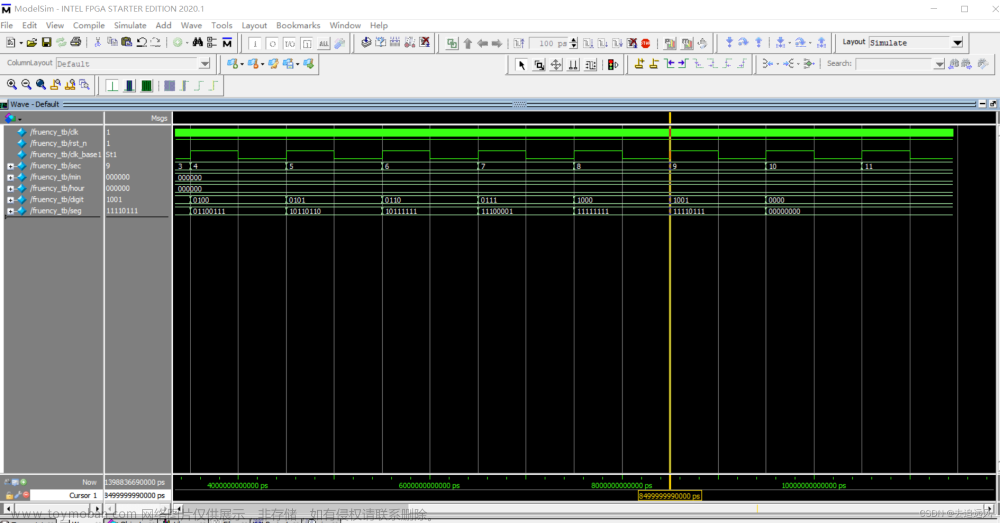 文章来源:https://www.toymoban.com/news/detail-794399.html
文章来源:https://www.toymoban.com/news/detail-794399.html
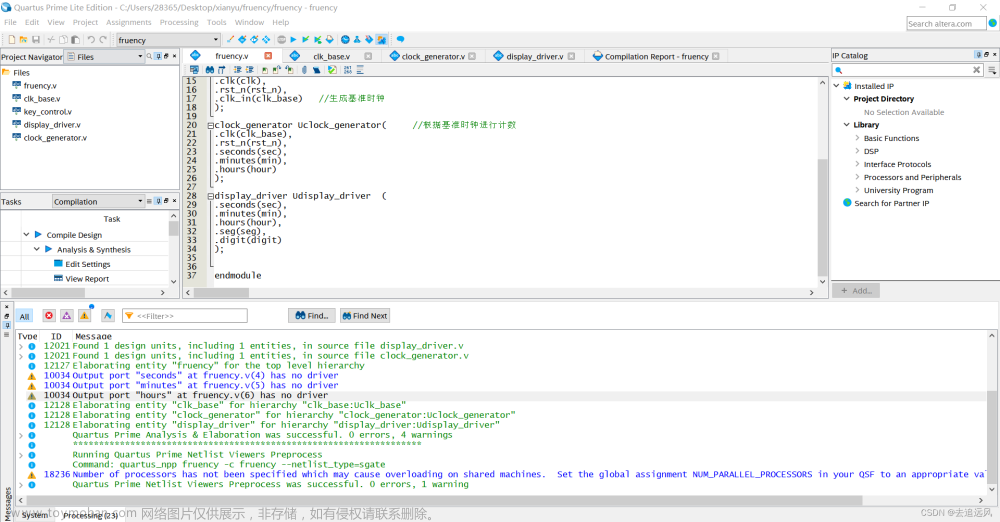 文章来源地址https://www.toymoban.com/news/detail-794399.html
文章来源地址https://www.toymoban.com/news/detail-794399.html
到了这里,关于【FPGA & Modsim】数字频率计的文章就介绍完了。如果您还想了解更多内容,请在右上角搜索TOY模板网以前的文章或继续浏览下面的相关文章,希望大家以后多多支持TOY模板网!


